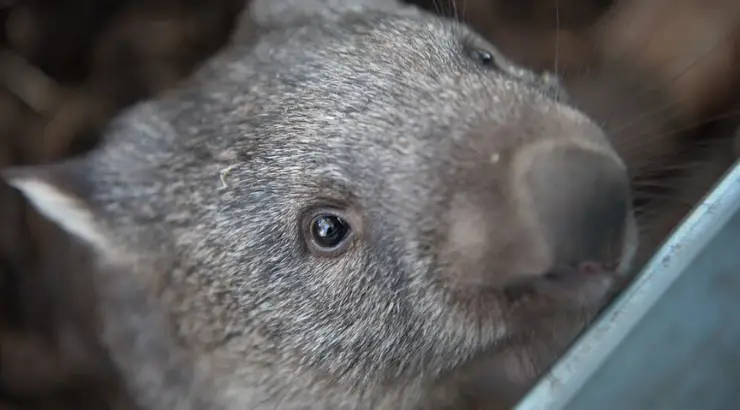Animals
Wombats Hailed as “Heroes” for Digging Water Hole Enjoyed by Thirsty Animals During Drought
The wombats are now being called “water diviners” due to their proven ability to provide water to thirsty neighbors.

(TMU) — While viral stories about wombats herding other animals to safety amid Australia’s unprecedented bushfire crisis have proven to be false, the marsupials are being celebrated as heroes for their ability to supply water to parched native fauna who have struggled to survive the prolonged drought.
The wombats are now being called “water diviners” by one biologist due to their proven ability to provide water to thirsty neighbors, as shown by their actions on a farm in Hunter Valley in the state of New South Wales, ABC reports.
The news comes as wombats continue to feel the brutal impact of ongoing bushfires, drought, mange, and automobile traffic, earning new protections against hunting for the Aussie icon.
Cattle rancher Ted Finnie lives roughly 19 miles (30 km) southwest of the small rural town of Merriwa, which lies in a particularly drought-ravaged part of Hunter Valley that has barely seen a drop of rain over the past three years.
However, wombats on the property have been hard at work digging for water and providing a life-saving service for other animals in the area. Their valiant labor has been clear as the wombat’s burrows have expanded into an all-out water hole.
Finnie explained:
“It’s best described as being a crater … Being about 20 metres (65 feet) in diameter, with the rim of the crater going down maybe four metres (13 ft.) into the ground.
“And as the crater has dried out due to the drought the wombats have burrowed to get closer to the water and so they’ve gone underground a little bit.”
The “wombat soak” has been enjoyed by other native animals, including wallabies, kangaroos, and wallaroos. But as conditions grow more arid thanks to the drought, other animals have used the water hole as a precious source of life.
A camera trap set up by Hunter Region Landcare Network has shown the diverse species of creatures drinking from the soak, including birds, goannas, echidnas, possums and even emus.
Finnie, a retired veterinarian at Taronga Zoo, credits the heroic wombats with saving the lives of the rare native animals.
He explained:
“They’re the ones keeping the hole open and accessible.
“I think it’s really quite surprising how intelligent wombats are in the matter of survival; they are great survivors.
“Especially given the fact that they are able to source this water supply fairly deep down.”
Dr. Julie Old, a biology professor at Western Sydney University, wasn’t aware of any similar cases of wombats digging for water, but she couldn’t deny what had occurred on Finnie’s farm.
The associate professor said that it was yet another testament to the evolutionary talents of the beloved wombat.
She explained:
“It’s almost like the wombats are water diviners, they’re finding the water and digging the holes to get to the water and the other animals are taking advantage of it.
“We often call wombats ecological engineers because they’re digging burrows and they make habitat for other animals.
“In this case, the wombat wallow on Ted’s place is being created by this ecological engineer — the wombat.”
The biologist is unsure of whether the water hole was intentional or simply a happy accident.
Old said:
“They tend to build burrows on the sides of creeks and near tree roots to help hold the burrow together.
“So where this spot is, not near a creek, would have been very unusual for the wombat to dig a burrow.
“We don’t know why it started, but it’s become quite deep.”
By Elias Marat | Creative Commons | TheMindUnleashed.com
Typos, corrections and/or news tips? Email us at Contact@TheMindUnleashed.com
